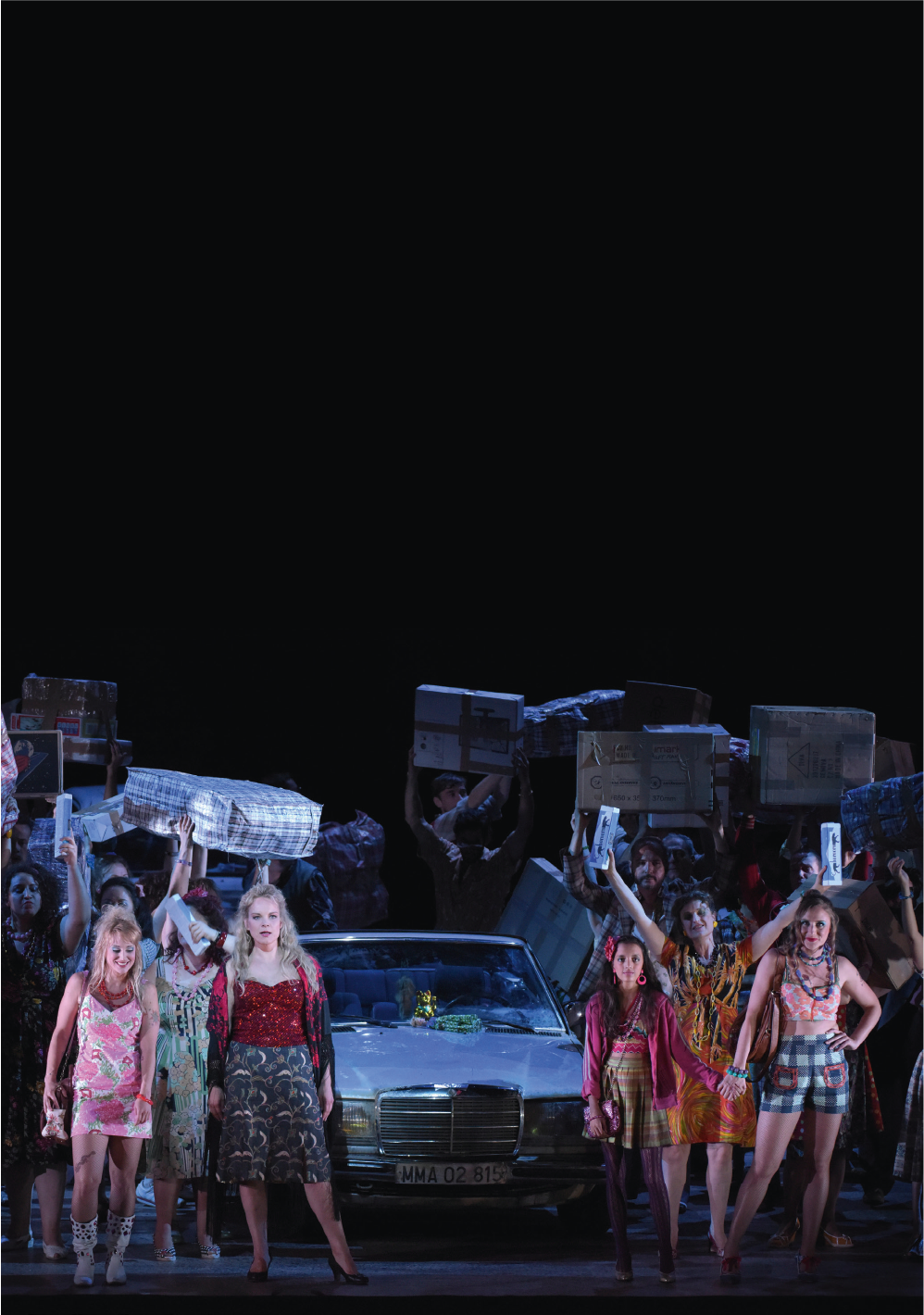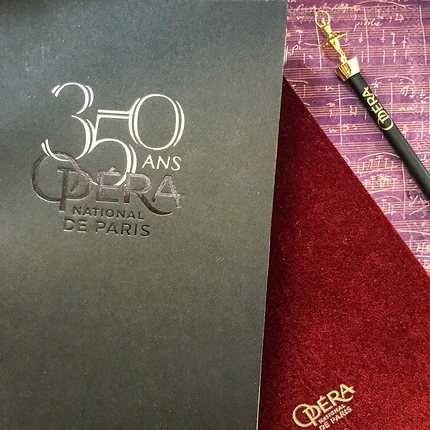Synopsis
Inspired by the choreography of Marius Petipa, Rudolf Nureyev’s Don Quixote is a veritable festival of dance, displaying the excellence of the soloists and the Corps de Ballet in a wide variety of ensembles and pas de deux. At the heart of the ballet, the lovers Kitri and Basilio use every ruse, from puppet shows to fake suicide, to see each other despite Kitri’s father’s opposition. Ultimately, after battling with windmills and encountering Cupid, Dulcinea and the Queen of the Dryads, it is the Chevalier de la Mancha who brings about the happy end. Flamboyant costumes with a Spanish air contribute to the brilliance of this joyful work.
Duration : 2h50 with 2 intervals
Artists
Ballet in a prologue and three acts
Choreography after Marius Petipa
Creative team
Cast
- Saturday 09 December 2017 at 19:30
- Monday 11 December 2017 at 19:30
- Wednesday 13 December 2017 at 19:30
- Thursday 14 December 2017 at 19:30
- Friday 15 December 2017 at 19:30
- Sunday 17 December 2017 at 14:30
- Tuesday 19 December 2017 at 19:30
- Wednesday 20 December 2017 at 19:30
- Friday 22 December 2017 at 19:30
- Sunday 24 December 2017 at 19:30
- Monday 25 December 2017 at 19:30
- Wednesday 27 December 2017 at 19:30
- Thursday 28 December 2017 at 19:30
- Saturday 30 December 2017 at 19:30
- Tuesday 02 January 2018 at 19:30
- Wednesday 03 January 2018 at 19:30
- Thursday 04 January 2018 at 19:30
- Friday 05 January 2018 at 19:30
- Saturday 06 January 2018 at 19:30
Latest update 02 January 2018, cast is likely to change.
Latest update 02 January 2018, cast is likely to change.
Latest update 02 January 2018, cast is likely to change.
Latest update 02 January 2018, cast is likely to change.
Latest update 02 January 2018, cast is likely to change.
Latest update 02 January 2018, cast is likely to change.
Latest update 02 January 2018, cast is likely to change.
Latest update 02 January 2018, cast is likely to change.
Latest update 02 January 2018, cast is likely to change.
Latest update 02 January 2018, cast is likely to change.
Latest update 02 January 2018, cast is likely to change.
Latest update 02 January 2018, cast is likely to change.
Latest update 02 January 2018, cast is likely to change.
Latest update 02 January 2018, cast is likely to change.
Latest update 02 January 2018, cast is likely to change.
Latest update 02 January 2018, cast is likely to change.
Latest update 02 January 2018, cast is likely to change.
Latest update 02 January 2018, cast is likely to change.
Latest update 02 January 2018, cast is likely to change.
Les Étoiles, les Premiers Danseurs et le Corps de Ballet
Orchestre de l’Opéra national de Paris
17 December 2017: Matinée “Rêve d’enfants”
Gala in aid of the educational programme Dix Mois d’Ecole et d’Opéra of the Paris Opera Academy
Ticket prices and bookings for this date only : +33 1 58 18 65 10
revedenfants.fr
Media
Access and services
Opéra Bastille
Place de la Bastille
75012 Paris
Public transport
Underground Bastille (lignes 1, 5 et 8), Gare de Lyon (RER)
Bus 29, 69, 76, 86, 87, 91, N01, N02, N11, N16
Calculate my routeIn both our venues, discounted tickets are sold at the box offices from 30 minutes before the show:
- €25 tickets for under-28s, unemployed people (with documentary proof less than 3 months old) and senior citizens over 65 with non-taxable income (proof of tax exemption for the current year required)
- €40 tickets for senior citizens over 65
Get samples of the operas and ballets at the Paris Opera gift shops: programmes, books, recordings, and also stationery, jewellery, shirts, homeware and honey from Paris Opera.
Opéra Bastille
- Open 1h before performances and until performances end
- Get in from within the theatre’s public areas
- For more information: +33 1 40 01 17 82
Online
Opéra Bastille
Place de la Bastille
75012 Paris
Public transport
Underground Bastille (lignes 1, 5 et 8), Gare de Lyon (RER)
Bus 29, 69, 76, 86, 87, 91, N01, N02, N11, N16
Calculate my routeIn both our venues, discounted tickets are sold at the box offices from 30 minutes before the show:
- €25 tickets for under-28s, unemployed people (with documentary proof less than 3 months old) and senior citizens over 65 with non-taxable income (proof of tax exemption for the current year required)
- €40 tickets for senior citizens over 65
Get samples of the operas and ballets at the Paris Opera gift shops: programmes, books, recordings, and also stationery, jewellery, shirts, homeware and honey from Paris Opera.
Opéra Bastille
- Open 1h before performances and until performances end
- Get in from within the theatre’s public areas
- For more information: +33 1 40 01 17 82














































































































































